Samsung Note 7 Battery Explosions – Explained: Samsung had launched its Galaxy Note 7 for booking orders & selling it by August the last year but unfortunately it turned out to be the reverse of what the company was dreamed about the sales regarding the Note 7. They had to go for a recall by September, 2016 for the first version of the device due to complaints regarding battery explosions & this doesn’s stopped nearby, by the end of October they had to recall over 2 million of the devices & were forced to discontinue the production of the newer units.
Samsung Note 7 Battery Explosions – No More A Secret:
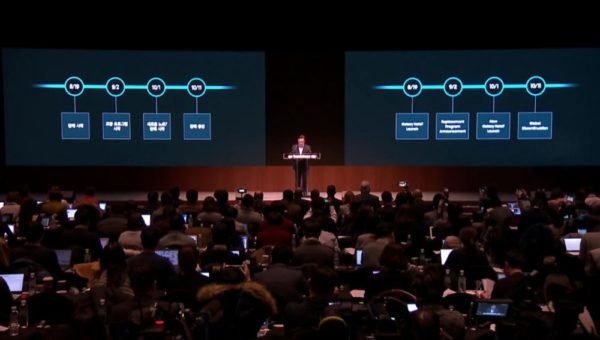
Recently in a press conference was organized just to provide the users with a perfect reason that why the devices were exploding. Although Samsung took its time & undergone many of its tests for finding out the proper reason for the same. According to Samsung, “Two separate battery defects caused both the original batch of Galaxy Note 7 phones & also there replacement units to overheat & explode”. The issue’s estiamted costs for the recall is said to be about $5.3 billion for Samsung.
Precautions For Safety By Samsung: During Recall:
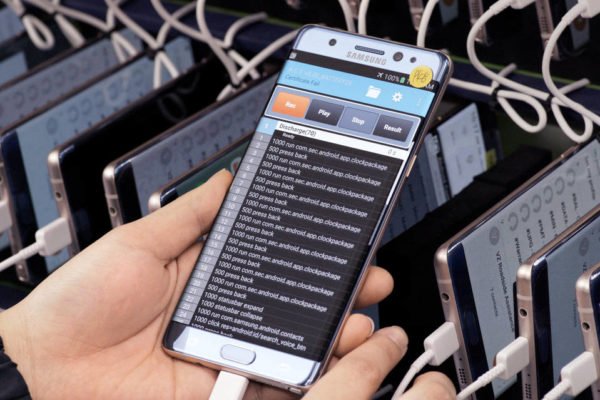
Although after the unsafe situations incidently created through Galaxy Note 7 phones, Samsung had tried harder to recall its devices at the fastest rates possible. Tim Baxter, CEO & President of Samsung Electronics America, Inc. had called it to be one of the very first Digital Recalls. For safety issues the company sent text messages & emails to communicate the recall too. They had also worked out with telecom in order to improve the volume & speed of the returned units & all this was done through issuing a software update that would disable the Galaxy Note’s Charging abilities thus rendering it useless as a phone anymore.
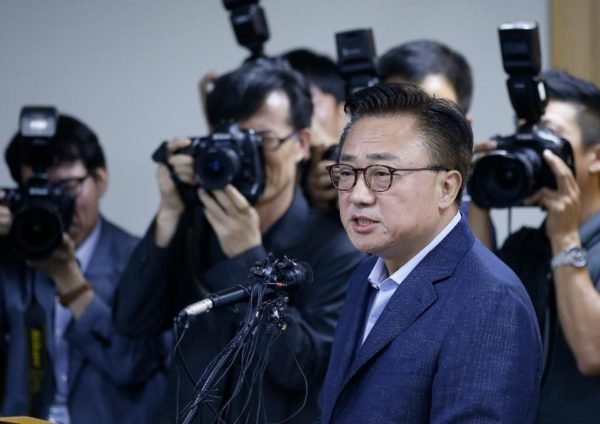
Also the department of transportation banned the Note 7 on airplanes, teams of Samsung employees were sent to airports to help consumers & for collecting the faulty (all the Note 7) phones. According to DJ Koh, President Mobile Communications Business for Samsung Electronics, “Technology innovation is important to Samsung , but the customer’s safety is more important. We want to reinstate trust in the brand.”
The Problem – According To Samsung:
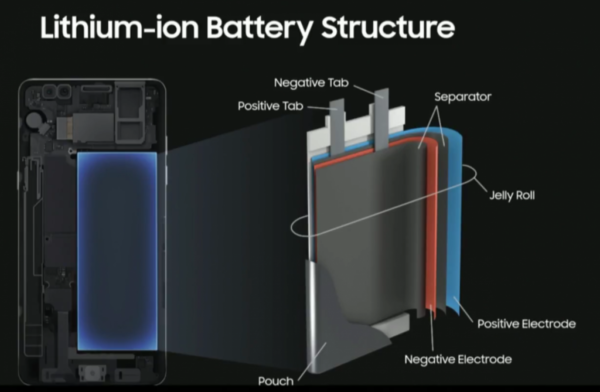
According to them two separate battery defects caused both the original batch of Galaxy Note 7 phaones & the replacement units to overheat & explode. Samsung said, “the first battery suffered from a design flaw. The battery’s external casing was too small for the components inside, causing it to short circuit & ignite.”

Justin Denison (Head of product strategy & marketing for Samsung’s US arm) said in an interview ahead of the conference, “The second battery, which was from another supplier, didn’t have the same flaw. Due to the rushed out supply for sufficient batteries to meet the demands for replacement units, the supplier introduced a manufacturing defect that led to the same result.”
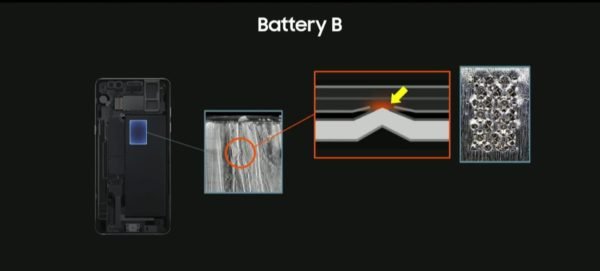
In the Sunday Press conference, Koh was accompanied by UL, Exponent & TUV Rheinland, all three independent testing firms that came to most of the same conclusions as the Company that “It was the battery & not the phone’s design or Samsung’s manufacturing process, that caused the Note 7 batteries to explode.”
Samsung’s Root Cause Analysis – For The Issue:
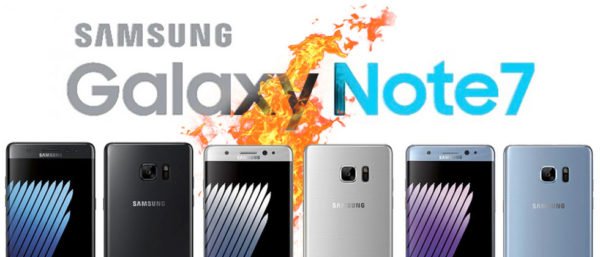
Samsung was having enough of pressure as the Note 7 issue was a big safety concern & the Root cause for the issue was of very high importance for the company so that it never repeats again in the future. In the past 3 months, Samsung had built a new Laboratory for testing its device, which staffed around 700 researchers having approx. 200,000 devices & 30,000 batteries for an attempt to replicate the cause of explosions & fires in the device.
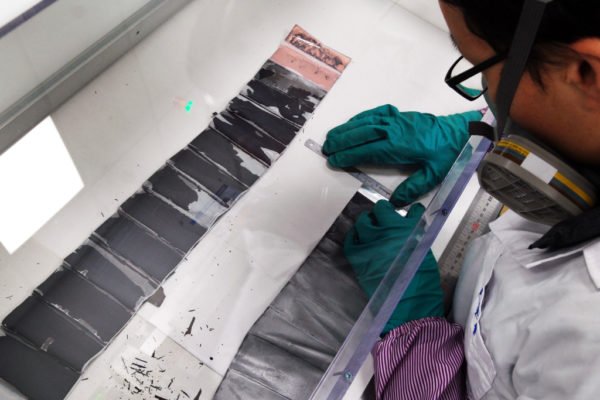
Whole the device was tested that also included areas such as the role of wired & wireless charging as well as fast & normal charging modes were tested too. The water resistance was also the main testing area with or without the back cover. The USB -C charger & the Iris scanner were also tested that were the additional features for Samsung. Samsung allowed its researchers to evaluate the software & algorithms tied to the wireless charging & also the way its third party applications were impacting the phone.

Samsung worked with three independent third party testing laboratories that are: UL, Exponent & the TUV Rheinland for assessing the issues across the software, hardware, manufacturing, logistics & most importantly the handling. Although the results that came out from the company & all these 3 third party labs, revealed the same results about the cause of defect.
Plan Of Action For Future – By Samsung:
Whole of this event, raised out a new question which was a big safety concern for the users. Samsung earlier also used to perform different tests for their pre-device launching but that showed some gaps with this issue so whats’s next from the Company? That’s a big question now on everyone’s mouth.
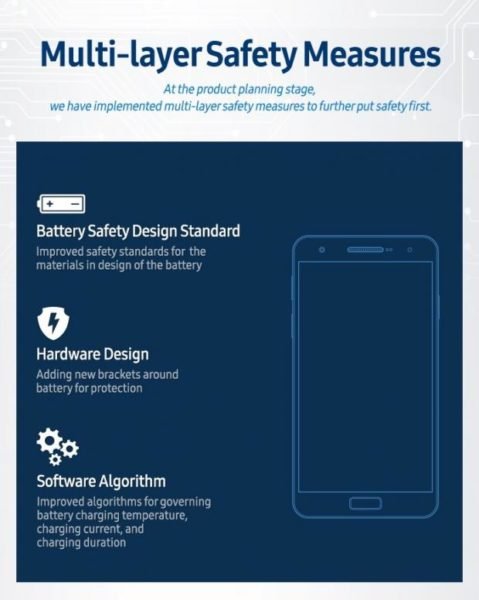
Samsung would have had to do an X-ray test on Battery A to find the problem, while Battery B would have required Samsung to disassemble it to find the error. Neither of those were steps in Samsung’s normal testing process but were handled by the battery manufacturers, Koh said. Now Samsung is about to change its testing procedures & make some amendments in the testing processes for mobile components.
Creating an Advisory Group & implementing an 8-Point Battery Safety System: With the amendments being made in the testing procedures by Samsung they have also created a battery advisory group including leaders from various universities & specialized consultants, naming in the list some of them as:
- Clare Grey – Professor, Chemistry at University of Cambridge.
- Gerbrand Ceder – Professor, Materials Science & Engineering at UC Berkeley.
- Yi Cui – Professor, Materials Science & Engineering at Stanford.
- Toru Amazutsumi – CEO of Amaz Techno.
The 8-Point Battery safety System:
Samsung now has a new quality assurance process that both Samsung & its component manufacturers have to follow.
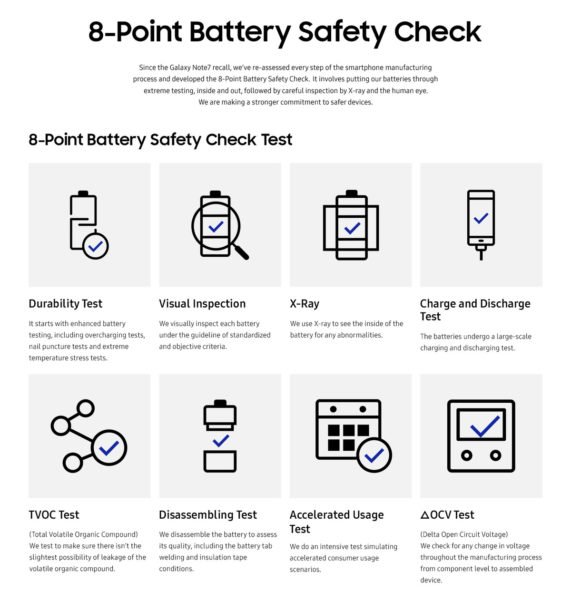
Implementing a multi-layer safety measures protocol at the product planning end & also now the most popular among all of us the new 8-Point battery safety system. This system includes the following points as listed below:
- Durability Test: Includes conducting additional durability tests which includes battery nailing & stress testing under extreme temperatures & overcharging tests too.
- Visual Inspection: Includes checking of the battery visually so as to compare it with those samples which are confirmed to be in accordance with the standardized criteria by the company.
- X-Ray Test: Includes going through a X-Ray test to inspect & address any possible battery issue such as any deflection of the electrode, which was one of the causes in the Note 7 issue.
- Disassembling Test: Includes the disassembling of the battery cell i order to perform a detailed check of the overall quality also incuding the battery tab welding & most importantly the insulation tape conditions, that was also a part of the Note 7 issue.
- TVOC Test: This includes performing of an sensing test so as to detect any leakages at the battery component & complete device levels.
- ΔOCV Test: Includes inspection of the battery condition by checking the voltage changes in a normal temperature.
- Charging & Discharging Test: This test includes application of new large scaled charge & discharge tests to all devices & that was also the initial test performed for the Note 7 issues.
- Accelerated Usage Test: Includes engagement of real life consumer usability scenarios for 2 weeks & that was able to shorten to a 5-day test period later.
Trust Re-building Soon:
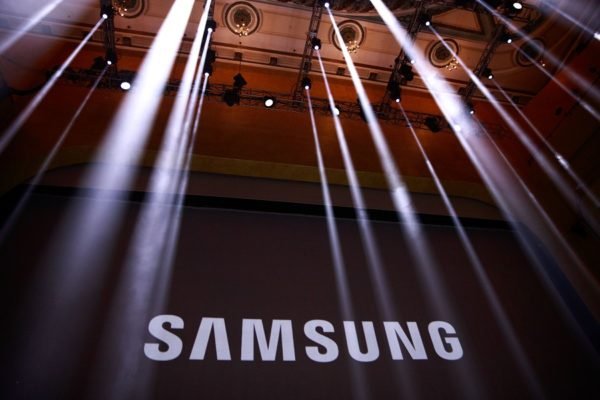
The recall for the Samsung Galaxy Note 7 have both positive & negative consequences for the entire smartphone industry & from now on the consumers will be getting better phones with higher safety, also the samsung processes gets a boost now, the smartphone industry is also improved with this whole incident & its RCA. Samsung also hopes taking a more industrywise view will be helping the company score some more higher points.
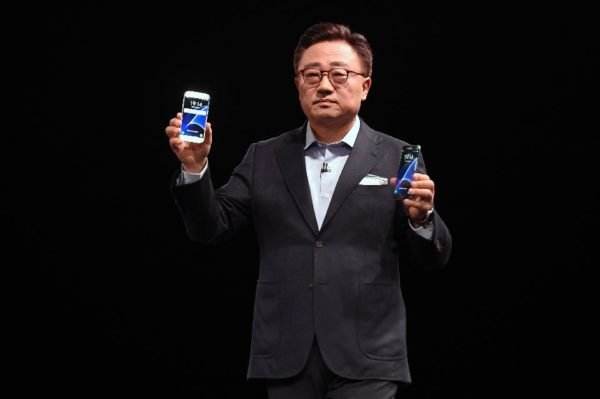
Koh said “Samsung is also talking to the Global Standards Groups about sharing its new battery review process,” Also added some points “If we contribute this as a global standard, then I strongly believe that will definitely increase the lithium-ion battery safety,” he said. Samsung would make its intellectual property around battery safety and standards freely available. With its new and improved quality assurance processes and designing processes, Samsung should make a strong comeback as the world awaits the arrival of the Galaxy Note 8 very soon.




